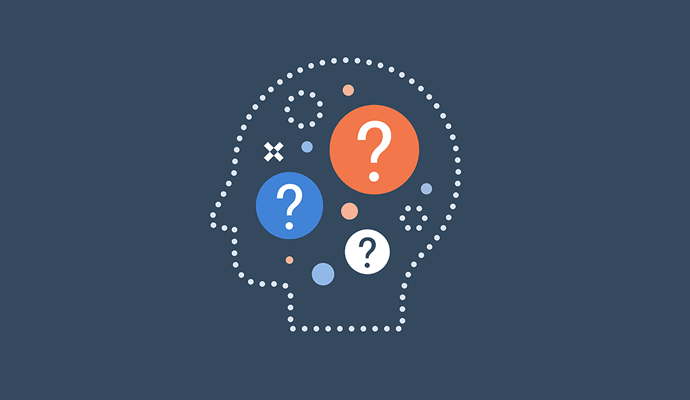How Big Data Insights Can Lead to Better Mental Healthcare
Using big data collected from different public systems, California's Mental Health Services Oversight and Accountability Commission delivers enhanced mental healthcare.

Source: Getty Images
- With healthcare organizations increasingly aiming to provide patients with comprehensive, holistic care, big data and analytics tools have become essential tools in the medical field.
In mental healthcare, these solutions are equally as important. To address individuals’ mental health, organizations often have to consider multiple different factors – a task perfectly suited for big data and analytics technologies.
Leaders at California’s Mental Health Services Oversight and Accountability Commission (MHSOAC) recognized the need for advanced analytics solutions to enhance care delivery. The organization partnered with SAS to help gather insights from multiple different data sources, leading to improved mental health services.
“We are a commissioned body that is tasked with accountability, as well as transforming California's mental health system – a fairly large mission. We achieve this through programs and grants, but also through research and analytics,” Dawnte R. Early, PhD, MS, chief of research and evaluation at MHSOAC, told HealthITAnalytics.
“We have really enhanced our analytics capabilities in the last few years. Some of our main goals center around what we call the seven negative outcomes, which include reducing criminal justice involvement, unemployment, school failure, suicide, homelessness, and prolonged suffering. This has been our approach for tapping into the types of data that are available at the state level that we maybe have not tapped into previously.”
READ MORE: How Precision Medicine Approaches Could Impact Mental Healthcare
As part of a study a few years ago, MHSOAC linked roughly 30 years of data from the Department of Justice to data on mental health consumers from the Department of Health Care Services. The study aimed to discover whether criminal justice involvement would decrease if individuals received the mental health services they needed, Early explained.
“We did see significant declines in arrests after patients exited our mental health programs. And so, we have brought in quarterly wage data to capture employment outcomes, and we’re bringing in California Department of Education data to capture school failure. We'll be bringing in death records to capture suicide – as well as mortality rates for mental health consumers – and birth records to capture maternal mental health,” said Early.
“All of these different state-level systems capture a piece of someone’s mental health story. In order to be able to fully understand the investments, you need to collect and connect the data to find out whether you’re fulfilling the mission of reducing those seven negative outcomes.”
Painting a more holistic, comprehensive picture of patients can also help reduce the stigma surrounding mental health, said Josh Morgan, PsyD, national director of behavioral health and whole person care at SAS.
“The emphasis on the seven negative outcomes can be frustrating. These are not bad outcomes, but if we end up talking about reductions of the bad, then we continue to perpetuate that mental health is connected to bad things happening,” he said.
READ MORE: Machine Learning Reveals Traits of High Mental Health Utilizers
“But if we can tell a more holistic story, then we can also say, ‘Yes, there are these seven negative outcomes. Let's see what strengths and growth people can have even in the midst of having acute mental illness.’ We can show that you can still thrive, you can have relationships, you can have employment, et cetera."
However, bringing all of this data into one place is only half the battle. Leaders also need to make sure that this information is accessible and digestible to all major players in the mental health field – not just data analytics experts.
“Once you connect all of this information together, you want to make sure that we're not talking in a vacuum – that we're not talking only to other data folks who understand data,” said Early.
“Not all mental health advocates are what I would call data researchers. But you still need to make sure that they are able to use all of this rich data to advocate and make policy decisions, both within the community and at the state level.”
After bringing all the data together, Early and her team go back and engage with the community to make sure they’ve represented their needs accurately.
READ MORE: Delivering Proactive Mental Healthcare With Artificial Intelligence
“Before we put out dashboards or briefs, we do a lot of engagement with the communities that we are trying to support to make sure that we've asked the right questions. We want to ensure that we've correctly interpreted the information and that what we're seeing in the data truly reflects their experience in the community,” said Early.
Having this data readily available also helps mental health advocates make the case for change, Morgan added.
“We constantly hear stories of what is and what isn’t working. When you have data on top of that, it’s far more powerful to propose policy changes or expand current programs,” he said.
“By bringing data together and having an analytics system, we have the opportunity to deliver answers to the questions you're asking. And we can give even more context and information to help broaden our understanding and hopefully give a voice to vulnerable people.”
In order to understand the racial, ethnic, and gender disparities that exist within mental healthcare, leaders have to make sure the data accurately reflects those challenges.
“We hear a lot from communities of color that they do not see themselves reflected in the data that we’re putting out. We’re trying our hardest to really dig in deeper into that, and looking at who is being served, who we are intending to serve, and who is the most vulnerable,” said Early.
“Data has the power to bring voices to communities that have often gone unheard. And that is a responsibility that we take so seriously here.”
